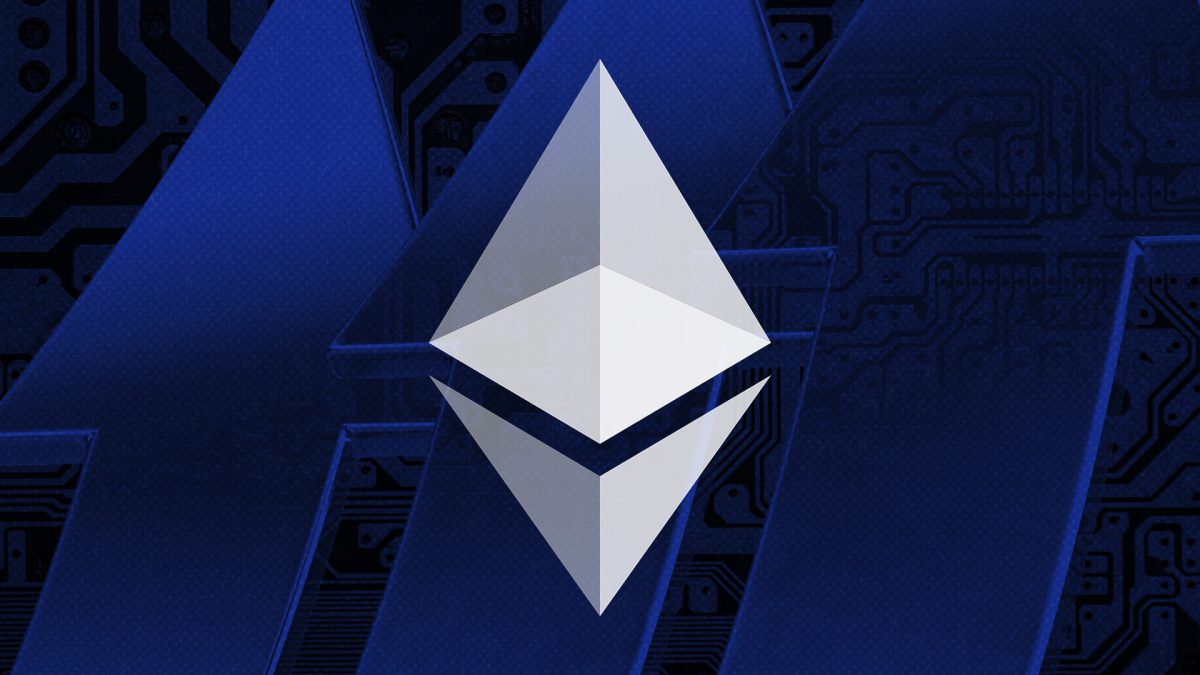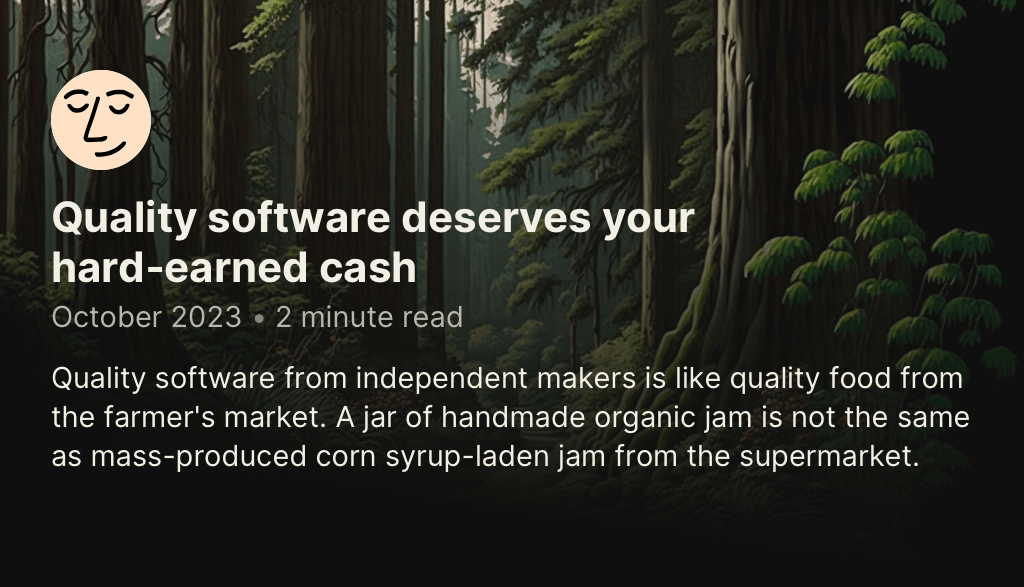
Thumbs’ Update: The Precarity of the Present
Is it safe?
Hey friends 👋
In the last issue of the newsletter we looked ahead, defining the various flavours of futurepunk from cyber to cypher to solar to stellar. If you missed it, I definitely recommend you give it a read. After all, with the current state of the things, looking forward to a future where where the world isn't a smouldering pile of ashes, might just be the dose of optimism we all need.
That's what I want to talk about today:
Instability
I don't think any of us would make the claim that the last few years have been particularly stable. A once in a century pandemic; a market cycle speedrun; attacks at the capitals in the US and Brazil; a land war in Europe; a rush of AI optimism followed immediately by tidal wave of AI doomerism; and, as if that wasn't all bad enough, a brutal and inhuman terrorist attack in Israel followed by even more brutal and inhumane carpet-bombing of Gaza.
Conflicts between Israel and Palestine throughout the past several decades are the subject heated debate, with those on either side trying to justify the unjustifiable acts perpetrated in the name of sacred land. Critics of Israel’s policies are often treading carefully to avoid being seen to align with very real antisemitic voices who loudly oppose Israel, for all the wrong reasons. With that said, as I've pointed out on many occasions, there is an important difference between criticizing a people, and criticizing and government and military regime. And the fascist, ethnonationalist government of Benjamin Netanyahu is ripe for criticism.
Not only has this regime committed war crimes (including the murder of civilians, children, and journalists) in the years leading up to the events unfolding now, their response to the most recent attack by Hamas has been to mirror this inhumanity and amplify it to the extreme, killing thousands of civilians, most of whom are children; blocking off escape routes; cutting off water, power, and electricity, and using banned weapons like white phosphorus.
The UN, Doctors Without Borders, and citizens all over the world (many of whom are proud and devout jews) have spoke out against this brutal and relentless assault by Israel, demanding an immediate ceasefire. But Netanyahu ignores their pleas, emboldened by the unwavering support of the US political class.
Protestors around the world have faced backlash from police, militaries, politicians, and the media. In supposed bastions of democracy, they've been dispersed by force, using equipment like smoke bombs, pepperspray, sound cannons, rubber bullets, and batons. In Israel, the government may even approve the use of live ammunition on their own citizens who protest in support of Palestine; this is according to The Times of Israel, a typically very pro-regime newspaper.
As all of this unfolds, an unprecedented amount of completely fabricated news stories, manipulated footage, and even deepfakes are spreading like wildfire. So today, I want to talk about some of the most important skills any of us can hone to help us survive the chaos of the modern internet:
Skepticism & Media Literacy
There's no denying that social networks have change the world. What is up for debate is whether this change is net positive or net negative. One thing we can say for sure is that information spreads faster than ever, whether or not it is accurate.
The modern media industry is a far cry from what was once known as journalism. Motivated by profits, self-censored by business relations and political biases, and constantly focused on maximizing views, the majority of mainstream outlets are no longer widely trusted.
Some say, "Don't trust. Verify." However, while certainly good in principle, this is rarely something that can be achieved. Information, especially confidential information, often requires anonymity to protect sources from retaliation. Furthermore, trust is one of the foundational characteristics that has helped humans survive and coordinate throughout history.
That is not to say that you should blindly believe anyone who calls themselves a journalist. All information, whether claimed to be verified or not, should only be considered part of the story. Corroborating facts, visual evidence (a weak form of evidence often mistakenly cast as strong), and repeatable independent verification are paramount. I recommend checking out this Crash Course on media literacy, to polish up your best practices.
Many people believe that twitter or similar social networks could be the ideal home for a new era of citizen journalism. Where anyone can provide information and others can attest to it via tools like twitter’s Community Notes feature (formerly Birdwatch). This has a lot of upsides, most notably that it removes gatekeeping and can allow those on the ground, closest to the action to report what they're experiencing.
Vitalik Buterin, the co-founder of Ethereum wrote a blog post about some of the strengths of this model and, while I think that it doesn't adequately address the role social signalling and echo-chambers play in defining the quality of notes, nor the fact that some have pointed out that Elon removes community notes from his own posts; it is nonetheless a worthwhile exploration of attestations to build decentralized trust.
But what about AI and Deepfakes?
A little over a year ago, Vitalik was on The Ezra Klein Show podcast discussing, for a largely non-crypto audience base, the benefits of blockchain technologies. At one point, Vitalik suggests the blockchain could help combat the spread of deepfakes, photoshopped and AI generated images, and more by adding verifiable attestations to the camera itself.
Recently, Adobe announced Content Credentials, an open standard aiming to tackle this via a ledger-like technology; and just last week, Leica launched the world's first camera with content credentials built-in.
I think this is interesting and certainly a step in the direction of what Vitalik describes but I'm wary that Content Credentials and the Coalition for Content Provenance and Authenticity (C2PA) does not feel as open as they would want us to believe. I worry about:
preservation of privacy
backdoors or permissioned access
reliability and workarounds
the role this could play in further propogating copyright and DRM
In any case, it's interesting to see people experimenting around complex technological issues like AI deepfakes that are becoming too prevalent too ignore.
Speaking of things which are becoming difficult to ignore...
Financial Uncertainty
We've looked at instability on the global level, but now I want to zoom in. After all this is a newsletter written by one person in his free time. For years, I've done a 9-5 job that I'm good at in a relatively specialized field (entirely outside the worlds of crypto or finance). It's a job I enjoy and I'm paid well enough to cruise along the lowest end of the middle class, servicing my student debt, and each year, to be a little less stressed than the year before.
Until recently that is. The company I work for is facing uncertain times, and recently we learned that there is the very real potential that there will be layoffs or even a bankruptcy in the future. What does this mean for me or for this project?
I don't know.
One thing is for certain: I need to stop relying on my work-issued laptop as my sole device for content creation. This five year old macbook pro is long in the tooth, but it's also my only way to access Final Cut, Affinity Photo, or Setapp; the tools I use to make my content. Not to mention I've developed a rock-solid workflow that's rooted in mac software, shortcuts, and tools that helps me to be productive while switching back and forth daily from traditional work to content creation.
So I decided to try a crowdfunding campaign. Not just any crowdfunding campaign though, because as you know, I'm a web3 purist, so I decided to try out a new platform called Fabric, which allows for crowdfunding onchain.
I wrote about this campaign in a short piece on the writing platform t²
The campaign runs until November 21st and during that time anyone can contribute any amount of ETH on Base. If the goal of 1.55 ETH is met in time, I can withdraw the funds. If not, supporters can withdraw their contributions.
I break down the reason I chose this particular amount on the crowdfunding page. I hope you'll take a look and consider supporting
Alright, we've talked enough about uncertainty. Let's shift gears to something more fun.
Free Points!
In case you missed it, the hottest trend in web3 is points! They're not securities (we don't think) and they add value (we think), and anyway Friends Tech did it and everyone loved that so why not, right?
While I'm not entirely sold on points, a few of my favourite apps have added them, so I'm gonna recommend you give them a try, just in case it turns out to be beneficial in one way or another.
It goes without saying that nothing I say in these newsletters is financial advice. I'm a disembodied cartoon thumb for goodness sakes. Do your own research, and never invest money you can't afford to lose. That's just common sense.
Rainbow Wallet
The most user-friendly crypto wallet just keeps getting better. The mobile app has seen some UX improvements, as well as new features like minting NFTs right in the wallet. There's also a web browser extension that's beginner-friendly, open-source, and brimming with keyboard shortcuts for power users. And of course, there will be points.

Warpcast
If you've been reading the newsletter, you'll know I'm a huge fan of open social protocols. They're the antithesis of centralized autocratic platforms like twitter and facebook. Plus, being open, they offer true data portability and interoperability. Don't like the features of one app or website? Move to another!
So while Farcaster is my preferred open protocol, I can use it on Warpcast, Opencast, Flink, Farquest, Farcord, Fiids, and whatever else people want to build. My two favourites at the moment are Warpcast and Opencast. The former is built buy the team who developed the Farcaster protocol and offers a lot of user-centric features like passkey support, apple pay, and now, points... or rather Warps.

Warps are cool. They can be used to pay the fees for connecting your account to a new app. Since your account is actually on the blockchain (Optimism to be specific), this connection is a transaction with a small fee. If you use Warpcaster to connect, you can pay this fee with Apple Pay or, if you have any, you can redeem some warps.
Tribes
One app that feels overlooked in my opinion is Tribes. This is a beautifully designed wallet to wallet chat app that allows for group chats, token-gated chats, and even group wallets. Their points program known as stars is essentially a leaderboard of the most active users with the top tier getting prizes paid in USDC!

If you're interested in checking it out, DM me on Farcaster or XMTP and I'll send you an invite. That way we'll both earn some extra stars.
I'm hoping to use Tribes to connect with my patrons. It's an ideal way to get in touch with the wallets that hold my patronage NFT, to share updates, airdrop goodies, and to receive questions for...
Q & A
I worked with a talented animator named Joshua Franco to make a real claymation work for my patronage NFT. Now available on Zora, Optimism, Base, and Ethereum, it's your way to show your fandom on chain while supporting my work.
By the way, anyone who contributes 0.01 ETH or more to my crowdfunding campaign will be airdropped a free patronage NFT on Base if the campaign is successful. As I mentioned above, anyone who holds the token can ask questions and I'll answer the most relevant ones here in the newsletter.
Today's question comes from Tjark, who asks:
How is USDC.e [etc] being swapped out for native USDC on L2s like Optimism and Base?
This is a great question, but it requires a bit of context for readers. Circle recently announced native minting of USDC on a variety of chains, including Ethereum rollups like Optimism, Arbitrum, and Base. This is the only officially recognized form of USDC and Circle is encouraging users to transition away from non-native USDC to native USDC.
Circle was never the issuer of bridged USDC. It was issued by the bridges who lock the Ethereum-native token in a smart contract on L1 and mint another token on L2. For that reason the token could not be redeemed by Circle, even now that they support other chains, making it not truly 1:1. This is not only a poor UX, but potentially a legal issue that could put Circle in the crosshairs of US regulators.
To help insulate them from legal liability, Circle recently updated their terms of service to explicitly state the distinction between native and bridged forms of USDC.
While Circle participated in the creation of USDC and is an issuer of USDC, Circle does not issue or redeem Bridged USDC. Bridged USDC is not backed by US dollars or any of Circle’s USDC-related reserves. Instead, Bridged USDC can only be unbridged to Native Ethereum USDC. Circle does not own or control the Supported L2 Networks or the Supported Bridges, and did not create Bridged USDC. Unbridging of Bridged USDC to Native Ethereum USDC is subject to the availability of the Supported L2 Networks and the Supported Bridges.
— Source: Circle USDC Terms
So back to Tjark's question, what is the solution? According to posts on Circle's blog:
On Optimism, the Optimism team will work with ecosystem apps to provide a smooth transition from bridged (USDC.e) to native.
On Base, the Base team will do the same. Additonally, Coinbase will provide 1:1 swapping of bridged (USDbC) to native USDC.
I'm not here to give financial advice, but it does seem it would be in everyones best interest to swap out of bridged to native and for whales to bridge back to L1. There are probably some yield farming opportunities via bridges and DEXs for those who are into that kind of thing.
It's also worth noting that native USDC makes bridged USDC a risky asset, long term. That means that Circle, or a CEX official partner like Coinbase, may be the only way to get a trustworthy version of USDC. While this will surely make USDC more legitimate in the eyes of the government, it introduces a massive vector for financial censorship and other access issues.
This further reinforces the need for privacy preserving technologies to prevent everyday blockchain users falling victim to "tainted coins" that get their wallets or tokens blacklisted from redemption.
Fortunately, there are great minds working on privacy preserving technologies. I've talked about Aztec before. They're in the process of rebuilding their zkVM privacy-first rollup to be completely decentralized and open-source. Now, another project, Nocturne has just raised funds from, amongst others, Vitalik Buterin and Bankless Ventures. More info here ⬇️
Hopefully that answered your question, Tjark!
Now let's wrap up another long newsletter the way we always do, with some...
Recommendations
First up is a PSA (in the form of a twitter thread) from beloved crypto sleuth ZachXBT. You may recall that the passowrd manager LastPass was hacked a while back and what we've seen is that many people had been storing their private keys / secret recovery phrases in the password manager.
Two things to take away from Zach's tweet:
if you had stored your keys in LastPass, move your funds to fresh wallets
never store your keys online
Then I've got a PSA from me: check out my new blog post! It's all about how and why to get started with PoolTogether. The newest version of this prize-savings protocol is now live, and this post commemorates it with a free NFT that you can mint just by subscribing to my content on mirror. Check it out below ⬇️
Next up, is a blog post from elle, about what it's like to stick it out in web3, in spite of how hard the past year has been. It felt too real reading this. But I'm happy to see elle is sticking it out, and "trying to save the internet.
Finally, here's a piece from one of my favourite blogs of late: Steph Ango / Writing. Steph is the CEO of Obsidian, the writing app I'm using to draft this very newsletter. I'm a big fan, both of Steph's short and insightful blog posts and of the idea behind this particular post: quality software deserves your hard-earned cash.
I can't help but think we'd all be happier in a world where we value the developers, artists, and creators who bring us the most value. But then I might be biased. In any case, if you agree with Steph or with me, you know where to support us.
Until next time,
Thumbs Up
If you enjoyed this blog post, consider collecting a copy. It's like tipping and receiving a unique digital collectible as a receipt.
If you want to become monthly supporting patron and unlock special perks, check out my Hypersub
And for the cypherpunks, I accept anonymous tips with Zcash to my shielded address:










